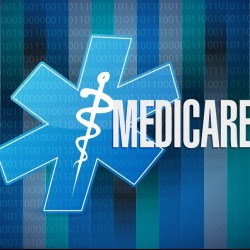3 Top Ways Healthcare Providers Can Increase Revenue and Profits
3 Top Ways Healthcare Providers Can Increase Revenue and Profits

How can I increase my profits? This is a question I hear quite often from providers and practice organizations. With the healthcare shift from fee for service to value-based, Revenue Cycle Management is becoming more essential than ever before.
Providers may now be experiencing larger debt, a decrease in cash flow, and an increase in claim denials due to the healthcare market.
Without cutting costs and affecting quality care, there are a few ways to increase your profit.
- Improve your upfront procedures and policies with a solid patient registration process. Improve the patient registration process.
The greatest savings opportunity for health plans, according to CAQH Health Index, is eligibility and benefit verifications, accounting for over $4.3 billion in potential cost savings. Electronic batch eligibility verification systems can offer a single solution to a time-consuming task for staff. Speeding up registration and patient payment processing can eliminate correcting errors later down the road, saving time and money for the provider and/or practice. Look for card payment providers that offer seamless integration with your existing systems and compare them.
The first step to eliminating these difficulties begins with front desk employees that are trained and well-versed in insurance eligibility and patient payment methods. The front desk needs to check patient eligibility before the patient encounters services that make a huge impact on revenue, as well as the overall patient satisfaction.
Patients often do not understand their financial obligations and responsibilities to the practice or the provider and are reluctant to take responsibility for the remaining portion. With most patients having high deductibles, co-insurances and co-pays, it is imperative to implement patient awareness of financial responsibilities. Many practices fail to set expectations upfront with their patients about their financial obligations, which results in administrative waste and cost retrieving payments after the service. Explaining payment methods to patients can boost your cash flow and will save time trying to get the payment from the patient after the service has already been provided.
Pre-admission contact prevents confusion about information regarding insurance eligibility and coverage, improving the overall experience of the patient. Going the extra mile to enhance the patient experience with registration by offering more insight into their upcoming service and procedures will ensure loyal, happy patients, while increasing provider/practice revenue.
2. Follow patient care from beginning to end through streamlined online programs.
Once the patient eligibility and verification process has been completed and the patient is educated on his/her financial responsibility regarding co-insurance, deductibles, and copays, an online patient account can and should be created.
Create patient online accounts for better patient provider connections.
Because a majority of patients are tech-savvy, many like to have visibility of their health care processes through online accounts. These accounts can show patients insurance verification, eligibility, patient appointments and account transparencies. After following their own care, patients have a better connection with their provider and feel more confident after visually tracking their healthcare information.
After patients visit with a provider, a credit card can stay in the patient’s account, reducing the cost for statements on patient balance and reducing overall time and money in the administrative costs of the provider. To reduce cash flow concerns, it is in the best interest of the practice to have the patient’s credit card on file for balance billing. The largest payer could be the patient due to high deductibles and co-insurances.
Encouraging the financial process of the patient’s visit through a clear online process and patient’s payments at the beginning of a visit will improve the patient’s financial experience and the overall billing process, which will only further increase revenue.
- The use of effective denial management through coding audits will increase cash flow.
Denial management is a great cost savings to practices. With the increase in co-pays, audits and scrutiny of claims, the denial process can disrupt the profitability and financial well-being of healthcare providers.
The average denial rates of a healthcare practice are 5-10%. Better performers are averaging 4%. This means, for some, one out of every five medical claims must be reworked or appealed. Reworking a denial or appeal costs approximately $25 per claim.
The solution to these high denial rates is coding audits for practices on accuracy and productivity. Audits help eliminate over and underpayments, insufficient patient details, wrong diagnoses, service and procedure codes, and lack of medical documentation errors. Implementing coding processes can result in integrating corrective actions, which will track reoccurring problems that can compromise clean claims and higher denial rates.
Key to preventing claim denials is not only a set of corrective actions but an expert task force to analyze and prioritize denial trends.
The key to preventing claim denials is not only a set of corrective actions but an expert task force to analyze and prioritize denial trends. Experts will determine what resources are needed and track and report progress.
Without expert analyzation, 65% of claim denials are never resubmitted and working denied claims slow cash flow. This is often because many practices lack the technology and the staff capacity to manage denials effectively. It is in the best interest of providers to take a more proactive approach by measuring the volume and causes of denied medical billing claims and implementing a process to lower denial rates.
40-70% of issues in decreases in revenue exist around front-end benefit verification and documentation processes, 20% of which are caused in the course of the billing process and 10-20% for the billing collections life cycle.
There is a growing need for fast and error-free billing processes. Outsourcing revenue cycle management to experts like Global Health Management Services, who have dedicated denial management experts can be a profitable, sustainable alternative.
Global Health Management Services can help you identify and improve your cash flow. To secure the peace of mind from assured financial success, contact Global Health Management Services today at www.globalhealthmgt.com or 888-610-2455.






